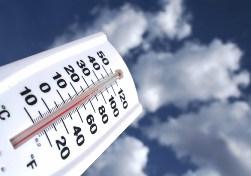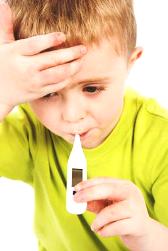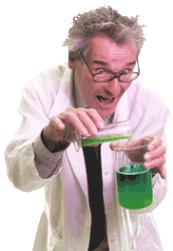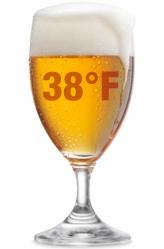Categories: Interesting Facts, Home automation
Number of views: 24844
Comments on the article: 1
Temperature sensors. Part one. A bit of theory and history
What is temperature
 Before you start the story about temperature sensors, you should understand what is temperature in terms of physics. Why does the human body feel a change in temperature, why do we say that today it’s warm or just hot, and the next day it’s cool, or even cold.
Before you start the story about temperature sensors, you should understand what is temperature in terms of physics. Why does the human body feel a change in temperature, why do we say that today it’s warm or just hot, and the next day it’s cool, or even cold.
The term temperature comes from the Latin word temperature, which in translation means normal condition or proper displacement. As a physical quantity, temperature characterizes the internal energy of a substance, the degree of mobility of molecules, the kinetic energy of particles in a state of thermodynamic equilibrium.
An example is air, whose molecules and atoms move randomly. When the speed of movement of these particles increases, they say that the air temperature is high, the air is warm or even hot. On a cold day, for example, the speed of air particles is small, which feels like pleasant coolness or even “dog cold”. It should be noted that the speed of air particles does not depend on wind speed! This is a completely different speed.
 This is what concerns air, in it molecules can move freely, but what about liquid and solid bodies? In them, the thermal motion of molecules also exists, although to a lesser extent than in air. But its change is quite noticeable, which determines the temperature of liquids and solids.
This is what concerns air, in it molecules can move freely, but what about liquid and solid bodies? In them, the thermal motion of molecules also exists, although to a lesser extent than in air. But its change is quite noticeable, which determines the temperature of liquids and solids.
Molecules continue to move even at ice melting temperature, as well as at a negative temperature. For example, the velocity of a hydrogen molecule at zero temperature is 1950 m / s. Every second in 16 cm ^ 3 of air, a thousand billion collisions of molecules occur. With increasing temperature, the mobility of molecules increases, the number of collisions, respectively, increases.
However, it should be noted that temperature and heat the essence is not the same thing. A simple example: an ordinary gas stove in the kitchen has large and small burners in which the same gas is burned. The gas combustion temperature is the same, so the temperature of the burners themselves is also the same. But the same volume of water, such as a kettle or bucket, will boil faster on a large burner than on a small one. This is because a large burner produces more heat, burning more gas per unit time, or has more power.
How to determine the amount of heat, in what units? In the school physics course there are many problems dedicated to heating and boiling water, which are very instructive and interesting, even just in the process of solving.
Per unit of thermal energy accepted calorie. This is the amount of heat that provides heating of 1 gram (cm ^ 3) of water per 1 ° C (1 degree Celsius). The temperature of the physical body in degrees reflects the level of its thermal energy. To measure the temperature used thermometersoften referred to thermometers.
 If two physical bodies have the same temperature, then when they are connected, heat transfer does not occur. If one of the bodies has a higher temperature, then when it is connected to a cold body, the temperature of the cold increases and vice versa. The easiest way to verify this when mixing liquids: in everyday life, everyone had to, at least in the bath, mix hot and cold water to obtain the required temperature.
If two physical bodies have the same temperature, then when they are connected, heat transfer does not occur. If one of the bodies has a higher temperature, then when it is connected to a cold body, the temperature of the cold increases and vice versa. The easiest way to verify this when mixing liquids: in everyday life, everyone had to, at least in the bath, mix hot and cold water to obtain the required temperature.
Temperature Scales
As you know, there are several temperature measurement scales. How can this be explained, because the temperature is the same, but on different scales completely different?
Such disagreements are not unique to temperature.After all, the same weight in the old days was measured in pounds and pounds, and now in grams and kilograms, the same with linear dimensions: millimeters, meters, inches, feet and very old fathoms and elbows.
A brief history of the development of temperature scales
Most first thermometer was invented by famous italian medieval scholar Galileo Galilei (1564-1642). The operation of the device was based on the phenomenon of a change in the volume of a gas during heating and cooling. This thermometer lacked an accurate scale expressing the temperature in numerical form, so the measurement result was very inaccurate.
 More accurate instruments for measuring temperature were proposed by a German physicist Gabriel Fahrenheit (1686-1736), which in 1709 developed alcohol thermometer, and in 1714 mercury. The temperature scale was named for the inventor fahrenheit scale.
More accurate instruments for measuring temperature were proposed by a German physicist Gabriel Fahrenheit (1686-1736), which in 1709 developed alcohol thermometer, and in 1714 mercury. The temperature scale was named for the inventor fahrenheit scale.
The lower reference point of this scale (0 ° F) was the freezing point of the saline solution. It was this temperature at that distant time that was the lowest that could be reproduced with sufficient accuracy. The highest point was the human body temperature (96 ° F), "measured under the arm of a healthy Englishman."
At that time, Fahrenheit lived in England, and it was there that he made his discoveries. Therefore, in the English-speaking countries, the Fahrenheit scale has been used for a long time, in modern times, the countries of English culture have also switched to the Celsius scale. Medical thermometers in these countries still use the Fahrenheit scale.
Another temperature scale in 1730 was proposed by a French scientist Rene Reaumur (1683-1757), which in 1737 was recognized as an honorary member of the St. Petersburg Academy of Sciences. Therefore, in Russia for measuring temperature began to use thermometers with Reaumur scale.
 Just like Celsius, this scale had two reference points - the melting temperature of ice and the boiling point of water. One degree of such a scale was obtained by dividing the entire scale into 80 parts - degrees. This scale was used for only a few decades, after which it became obsolete.
Just like Celsius, this scale had two reference points - the melting temperature of ice and the boiling point of water. One degree of such a scale was obtained by dividing the entire scale into 80 parts - degrees. This scale was used for only a few decades, after which it became obsolete.
In 1742, a Swedish physicist Anders Celsius (1701-1744) proposed a familiar decimal temperature scale. It uses the same reference points as Reaumur, only the scale is divided evenly not into 80, but into 100 divisions. Thus, one degree on the Celsius scale is 1/100 of the difference in boiling and freezing temperatures of water.
The latest temperature scale was proposed by the Englishman William Thomson (1824-1907), which for scientific merits in 1866 received the title of Baron Kelvin. Kelvin scale It is still used as the main standard of modern thermometry. In this scale, absolute zero (−273.15 ° C) is taken as the reference point.
According to Kelvin's theory, at this temperature, any thermal motion ceases. At this temperature, all conductors have zero resistance to electric current, superconductivity. Such a temperature has not yet been reached by anyone, it exists only theoretically.
Read on in the next article.
Boris Aladyshkin, bgv.electricianexp.com
Continuation of the series of articles:
- Temperature sensors. Thermistors
- Temperature sensors. Thermocouples
- A few more types of temperature sensors: semiconductor sensors, sensors for microcontrollers
See also at bgv.electricianexp.com
:
